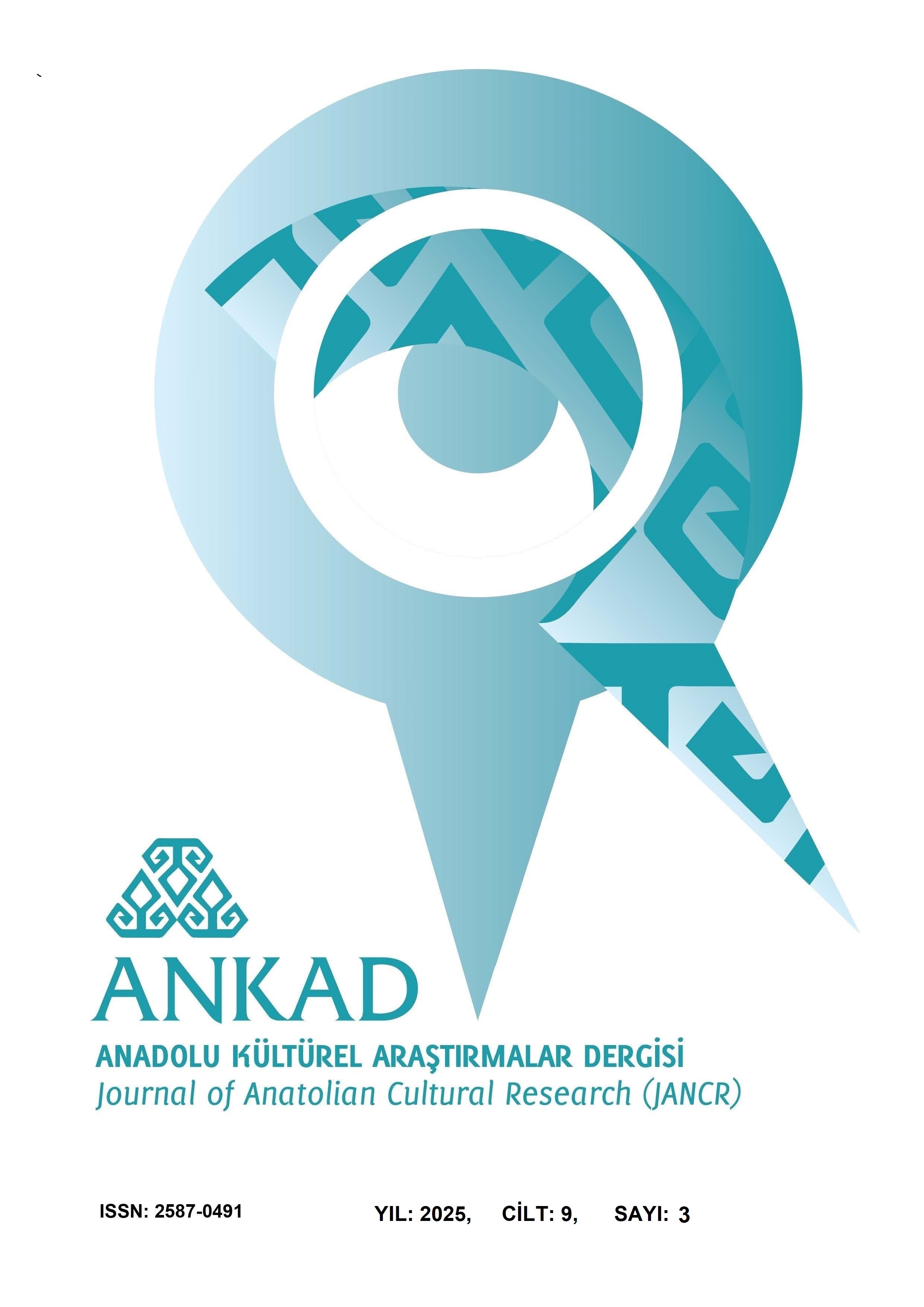Does Teacher Autonomy Affect Motivation? An Examination on Primary School Teachers
DOI:
https://doi.org/10.63556/ankad.v9i3.271Keywords:
teacher autonomy, teacher motivation, professional satisfaction, educational policies, teacher developmentAbstract
This study, conducted in 2024, aims to examine the relationship between primary school teachers’ perceptions of teacher autonomy and their professional motivation, as well as the impact of gender differences on these variables. The research was designed using the relational survey model. The findings indicate a positive but weak relationship between teachers' perceptions of autonomy and their professional motivation. This suggests that other factors also influence teachers' motivation, such as workload, support from school administration, and professional commitment. Gender differences emerged as a significant finding of the study. Male teachers scored higher in classroom-level autonomy perception, while female teachers reported higher scores in school-level autonomy perception. Furthermore, female teachers demonstrated more positive attitudes toward the profession, higher professional achievement motivation, and greater job satisfaction compared to their male counterparts. On the other hand, male teachers exhibited a higher tendency to avoid the profession. No significant gender differences were found in the sub-dimension of professional internalization, indicating that professional internalization levels are shaped by personal experiences and working conditions. The study emphasizes the importance of strengthening teachers’ autonomy perceptions to enhance their professional motivation; however, it also highlights that this alone is not sufficient, and factors such as gender, workload, and administrative support should also be taken into consideration.
References
Akkök, F. (2019). Öğretmen özerkliği ve iş tatmini. Eğitimde Yenilikçi Yaklaşımlar Dergisi, 15(4), 245-260.
Aslan, D., & Ünal, M. (2019). Öğretmen özerkliği ve motivasyonu arasındaki ilişki: Türk eğitim sistemine dair bir inceleme. Eğitim Araştırmaları Dergisi, 21(2), 150-165.
Beltman, S., Mansfield, C., & Price, A. (2011). Teacher motivation and professional development: A review of the literature. Teaching and Teacher Education, 27(1), 15-34. https://doi.org/10.1016/j.tate.2010.08.017
Beltman, S., Mansfield, C., & Price, A. (2011). Teacher resilience: A framework for research, policy and practice. Teaching and Teacher Education, 27(4), 867-876. https://doi.org/10.1016/j.tate.2010.11.015
Beyhan, D., & Koçak, D. (2015). Kadın öğretmenlerin öğretmenlik mesleğine dair algıları: Duygusal tatmin ve toplumsal hizmet algısı. International Journal of Social Science, 3(5), 87-94.
Borman, G. D., & Dowling, N. M. (2011). Teacher attrition and retention: A meta-analytic and narrative review of the research. Review of Educational Research, 81(3), 259-292. https://doi.org/10.3102/0034654313405635
Deci, E. L., & Ryan, R. M. (2000). The "What" and "Why" of goal pursuits: Human needs and the self-determination of behavior. Psychological Inquiry, 11(4), 227-268. https://doi.org/10.1207/S15327965PLI1104_01
Deci, E. L., Vallerand, R. J., Pelletier, L. G., & Ryan, R. M. (1991). Motivation and education: The self-determination perspective. Educational Psychologist, 26(3-4), 325-346. https://doi.org/10.1080/00461520.1991.9653137
Demir, S. (2023). Öğretmen özerkliği ve mesleki motivasyon arasındaki ilişki: Bir meta-analiz çalışması. Eğitim ve Bilim Dergisi, 48(4), 139-156.
Flink, C., Boggiano, A. K., & Barrett, M. (1990). Contingent rewards and intrinsic motivation: A meta-analytic review. Psychological Bulletin, 108(3), 539-548. https://doi.org/10.1037/0033-2909.108.3.539
Friedman, I. A., & Kass, E. (2002). Teachers' perceptions of their professional development in Israel. International Journal of Educational Development, 22(3), 241-257. https://doi.org/10.1016/S0738-0593(01)00060-6
Guskey, T. R. (2000). Evaluating professional development. Corwin Press.
Hargreaves, A. (2003). Teaching in the knowledge society: Education in the age of insecurity. Teachers College Press.
Hochschild, A. R., & Machung, A. (2012). The second shift: Working families and the revolution at home (Revised edition). Penguin Books.
Ingersoll, R. M. (2003). Is there really a teacher shortage? Contemporary Economic Policy, 21(1), 1-19. https://doi.org/10.1093/cecp/21.1.1
Joo, B. K., & Park, S. (2010). Organizational socialization and teacher motivation. Journal of Workplace Learning, 22(5), 330-345. https://doi.org/10.1108/13665621011054039
Karadeniz, D., & Fer, S. (2023). Öğretmen Özerkliği Algı Ölçeği’nin geçerlik ve güvenirlik çalışması. In International EDU Congress (pp. 720-735). Edu Yayıncılık.
Karasar, N. (2006). Bilimsel araştırma yöntemleri. Ankara: Nobel.
Klassen, R. M., & Tze, V. M. C. (2011). Teacher efficacy research 1998-2009: A meta-analytic comparison of studies and methods. Educational Psychology Review, 23(1), 1-31. https://doi.org/10.1007/s10648-010-9141-8
Klem, A. M., & Connell, J. P. (2004). Relationships matter: Linking teacher support to student engagement and achievement. Journal of School Psychology, 42(3), 243-262. https://doi.org/10.1016/j.jsp.2004.02.003
Kusur, H. (2016). Öğretmenlerin özerklik algıları ile tükenmişlik düzeyleri arasındaki ilişki. Eğitim Bilimleri Araştırmaları Dergisi, 14(2), 45-60.
Miller, R., Macdonald, D., & McGinn, N. (2013). Gender and teacher autonomy in Canadian schools: A comparative analysis. Teaching and Teacher Education, 29(1), 84-92. https://doi.org/10.1016/j.tate.2012.08.004
Nias, J. (1999). The emotional work of teaching. Routledge.
Öztürk, E., & Uzunkol, E. (2013). İlkokul Öğretmeni Motivasyon Ölçeğinin psikometrik özellikleri. Eğitimde Kuram ve Uygulama, 9(4), 421-435.
Pomerantz, E. M., & Geiger, T. M. (2013). Teaching practices, teacher–student relationships, and children's motivation in the classroom. Educational Psychologist, 48(3), 131-147. https://doi.org/10.1080/00461520.2013.795168
Pearson, L. H., & Moomaw, W. (2005). The relationship between teacher autonomy and stress, work satisfaction, and commitment. Educational Research Quarterly, 29(1), 37-53.
Ryan, R. M., & Deci, E. L. (2000). Self-determination theory and the facilitation of intrinsic motivation, social development, and well-being. American Psychologist, 55(1), 68-78. https://doi.org/10.1037/0003-066X.55.1.68
Sachs, J. (2003). The activist teaching profession. British Journal of Sociology of Education, 24(3), 35-45. https://doi.org/10.1080/0142569032000124797
Schunk, D. H., Pintrich, P. R., & Meece, J. L. (2008). Motivation and learning strategies for student success: A self-regulated learning approach (4th ed.). Pearson.
Skaalvik, E. M., & Skaalvik, S. (2017). Teacher self-efficacy and teacher burnout: A study of relations. Teaching and Teacher Education, 67, 217-226. https://doi.org/10.1016/j.tate.2017.07.014
Skaalvik, E. M., & Skaalvik, S. (2017). Teacher self-efficacy and teacher motivation. Educational Psychology Review, 29(2), 137-150. https://doi.org/10.1007/s10648-017-9402-y
Taymaz, M. (2018). Öğretmenlerin iş tatmini ve motivasyonunun artırılması üzerine araştırmalar. Eğitim Politikaları Dergisi, 14(3), 120-138.
Tschannen-Moran, M., & Hoy, A. W. (2001). A multidisciplinary analysis of the nature, meaning, and measurement of teacher trust. Review of Educational Research, 71(3), 547-593. https://doi.org/10.3102/00346543171003547
Tschannen-Moran, M., & Hoy, A. W. (2001). Teacher efficacy: Capturing an elusive construct. Teaching and Teacher Education, 17(7), 783-805. https://doi.org/10.1016/S0742-051X(01)00036-1
Vallerand, R. J., Pelletier, L. G., & Blais, M. R. (2007). The motivation in education scale: A tool for assessing students' motivation in the classroom. Educational and Psychological Measurement, 67(2).
Downloads
Published
How to Cite
Issue
Section
License
Copyright (c) 2025 Journal of Anatolian Cultural Research

This work is licensed under a Creative Commons Attribution-NonCommercial 4.0 International License.










